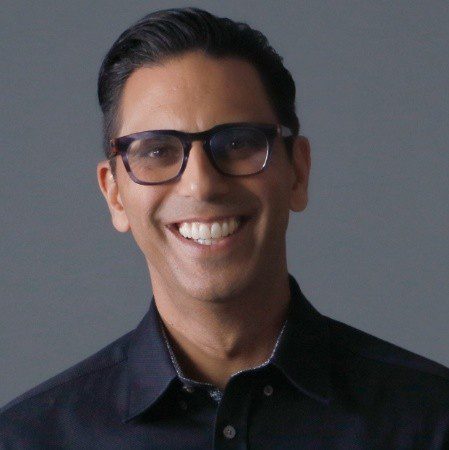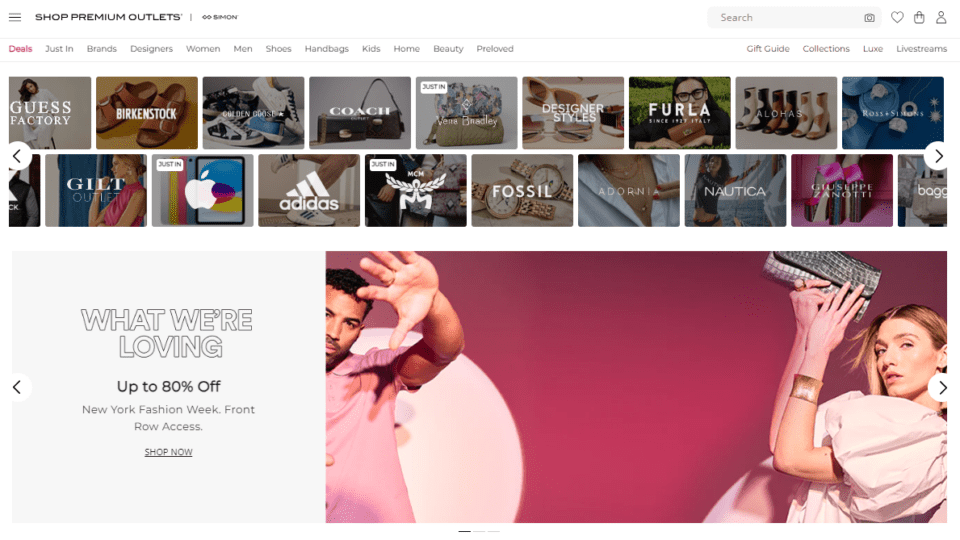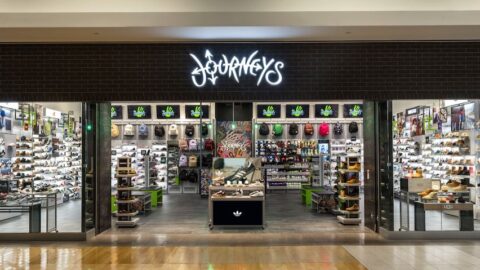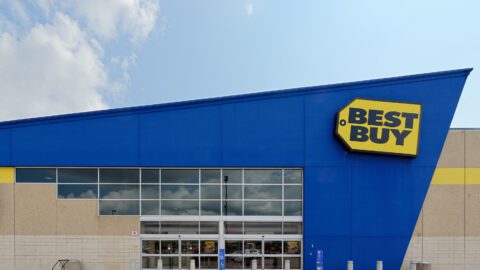It’s been more than four years since mall operator Simon launched its ecommerce joint venture with Rue Gilt Groupe, and the Shop Premium Outlets (SPO) marketplace is going strong. The site, aimed at bringing off-price inventory from Simon’s malls online, now features more than 300 brands and as of last September, sales were up 100% year over year.

According to SPO’s CEO Neel Grover — who has spent the last 20 years leading some of the world’s biggest marketplaces, including Buy.com, Rakuten and Bluefly.com — this is still just the beginning for SPO.
Retail TouchPoints sat down with Grover to check in on how his latest marketplace endeavor is evolving and get a peek into his crystal ball for what lies ahead in the marketplace landscape.
Retail TouchPoints: What makes SPO stand out in the sea of other marketplaces?
Neel Grover: About half of our team has worked together for over a decade, some of us for more than 20 years, and the enticement of [SPO] was that we could do things differently. Companies like Simon have such a unique opportunity because they are so close to the last mile. It’s a challenging opportunity; it’s not easy, but if it was easy, everyone would do it.
We look at ourselves as more of a shop-in-shop than a marketplace, and the reason I say that is we collaborate with brands more than most other marketplaces. We’re providing a different solution, an additive solution, that extends the brand’s value proposition. Because we focus on sale and outlet inventory, it’s not the same inventory that you get on other folks’ sites, and we’re really trying to collaborate with our brands to say, “Hey look, you probably have excess inventory, or you have these outlets that you haven’t digitized. In either case, why don’t you [use SPO] as an extra valve for that inventory?”
For some brands SPO is the only place you can find this inventory. Other brands have it on their own site and our site, and some even distribute through other marketplaces. We do prefer to focus more on the first two, where we’re the exclusive place for the inventory or we’re complementary to their own site. In either case, we really try to say, “We’re an extension of your site and we’re going to be a better partner to you than anyone else you can work with. There might be other partners that can drive you more sales, but we’re going to be the best partner.” And a lot of that is because of the Simon DNA. Simon has a bigger relationship with most of these brands, and we just try to enhance it.
We’re also very curated [in the brands that we bring onto the marketplace]. You don’t have to be a company that’s inside of Simon locations to be on our site; we do actually have some DTC brands. And because we share a lot of data with our brands, we can actually help these brands determine where they should open a location, whether that’s an outlet or a full-price store, because we can tell you geographically [where you have a] concentration of consumers.
RTP: In that regard could SPO almost be seen as a funnel for the physical retail side of the Simon business?
Grover: Completely. I think everyone initially thought it would be the other way, where we would go to all the people Simon currently has and say, “Look, you’ve got these stores; let’s drive more sales to the stores.” But now we look at it both ways. Whether they’re looking at opening up more stores or maybe they don’t have any stores at all, we can tell them, given our customer base — because you know, Simon has a couple billion visitors going into these malls and outlets annually — we can tell them, of those that are buying from [SPO], where the biggest clusters are, and they can use that data to come back and say, “We’d like to consider this location.”
RTP: What’s your ultimate vision for SPO?
Grover: Part of why I was so excited to come here and still believe it’s such a great opportunity is we have so many locations close to the consumer. We’re not just outlet inventory; in fact, the vast majority of our inventory is sale inventory coming from the malls, so we have a lot of inventory that’s coming out of locations that are very close to consumers. It’d be great to really light all those up and make it easier for a customer to come pick those items up or have them delivered same day, sometimes even faster.
We’re on the path to doing that. I believe we were the first marketplace to launch buy online pick up in store (BOPIS) with a couple of brands. Mulberry is probably the best example of that today, where you can order on SPO and then you can go pick it up in one of their stores. In Mulberry’s case, they’ve got four locations, one is a Premium Outlet and three others are mainstream stores. They’re not all Simon locations either; it’s done on a location basis with the retailer, and we’ve done the work to tie into their POS system.
We’ve also done livestream events. That’s another great opportunity for us because, one, we’ve got the locations that are near the consumer and, two, we also have locations that have inventory that is not online or unlocked [in a digital sense]. Sometimes the reason for that is the brands don’t want it to be, but in other cases it’s just because it’s never been digitized. So we do livestream events from their stores, highlight the store and the location (so consumers know that there’s even more items in the store) and then we pick a handful of products and talk about them. We bring in influencers or often we utilize one of the store employees who knows the product extremely well, and we talk about the product and sell it for a period of time. That’s a very light-touch approach for a brand.
We go anywhere from super light-touch to fully integrated. For fully integrated, we’ve got lots of different solutions as well. In most cases, it’s fulfilled directly by the brand just like they fulfill other ecommerce orders. We’ve got a handful of brands that are fulfilling from stores, including Mulberry, and Tod’s fulfills from one of their locations as well.
We look at ourselves as a solution provider for these brands. On the one hand, it’s helping them move inventory and introduce their brand to new customers. And then on the other hand, we’re giving them a lot of data to help them get smarter about the consumer, not just on our site, but for their overall ecommerce experience. In some cases, we share customer data with brands so we can be their hub to sell the outlet and/or sale inventory, and then they can remarket that consumer back for full price. We’ve become very symbiotic with the brands.
RTP: What has been the most challenging part of bringing SPO to life?
Grover: Probably the biggest challenge is some of these brands have very strict policies for how they do things, and we always adhere to their policies. We’ve had some brands that are very, very protective [of how they appear online] and we get it. And then we have others that are like, “Yell to the world that we’re here,” because they can save on CapEx and they see SPO as another store. We’ve had to come up with tech solutions that account for that variability and then business processes around all of it.
RTP: A lot has been happening in the marketplace space recently. Outside of Amazon and Walmart, there’s Temu and Shein coming on the scene and the launch of TikTok Shop. As someone who’s worked in marketplaces for a long time, where do you think this is all headed?
Grover: I think folks are realizing that you should focus on what you’re really good at, whatever that may be, and then you can enhance that with the marketplace. Just like Simon is continuing to focus on what they do so well and then we add the marketplace as an extra layer over what they’re doing.
And then you see other people coming from a different end-around. That’s what TikTok is doing. TikTok has been a great place for entertainment. Given the fact that people are learning about and discovering new products there, TikTok wants to try to get a piece of [the commerce they’re driving] and keep people on there. We’ve seen other social networks try this and not be successful and see it erode some of their advertising, which is their core business. It’s really about finding that right combination between advertising and commerce, if commerce is not your core business. It’s a trade off, and the margins are much higher in advertising than they are in commerce.
With any marketplace you’ve got to look at what is true to your customer, whoever that is. If it’s the TikTok audience, what are they looking for from TikTok? Are they looking to buy then and there? If you’re a niche site and you want to add other products, for example, if you have a wine blog, it could make sense to purchase those wines right then and there. Then again, it’s a trade-off between the advertising you might get.
But if you’ve got a captive audience and you bring in products that fit well with what your audience is looking for, it makes a lot of sense to have a marketplace. And you can do that much easier today than you could 10, 20 years ago when we started doing it, so I think you’ll continue seeing many more marketplaces. It might even go down more to the individual level; you might see influencers do marketplaces more.
RTP: Do you think other mall operators will follow your lead and begin to launch their own marketplaces as a way to evolve with the times?
Grover: I mean, I hope they don’t. It’s not easy. What [mall operators] do is not easy for tech folks like us, and what we do is not easy for them. I’ve been on the digital side of the marketplace business for many years, and I do think there’s going to be more of a crossover, and Simon is primed to do that. But they have a very big, physical business that’s still doing well. The hype around the mall being dead is not correct. If you look at [Simon’s] numbers, they’ve got good traffic, they’ve got good sales and stores are coming into [their properties]. They don’t have a lot of empty spaces, certainly not at their top locations; brands are fighting to get in there.
That being said, I think they created [SPO] because they do see an opportunity to enhance and add to what they already do. Is it going to replace what they’re doing? No, but can it supplement it? Absolutely. There’s now Simon Search, which we helped them develop, where you can search for products in stores. You can’t currently buy them there, but you can search for them, and that’s a huge leap compared to other malls. It just shows you the innovation [that’s possible] when you have a strong mentality toward enhancing the opportunities for customers and delivering a great customer experience for both your end consumer and your brand partners.















